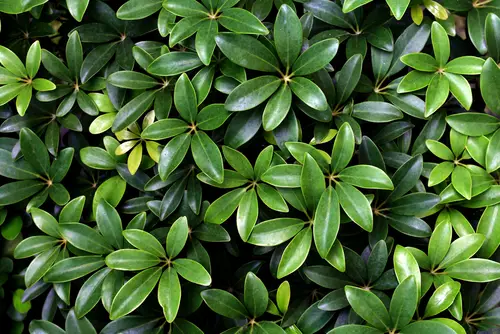Umbrella plants are a popular choice for indoor greenery due to their attractive appearance and relatively low maintenance. However, if you notice your umbrella plant turning brown, it can be concerning.
Brown leaves can indicate that something is wrong with your plant, and it is important to identify the cause and take action to fix it.
There are several reasons why an umbrella plant’s leaves may turn brown. These can include improper watering, over-fertilizing, lighting problems, and temperature issues.
Understanding the common reasons for brown leaves can help you identify the cause and take appropriate steps to revive your plant. Proper care and maintenance are also essential for keeping your umbrella plant healthy and preventing brown leaves from occurring in the first place.
Key Takeaways
- Brown leaves on an umbrella plant can indicate that something is wrong with the plant.
- Common reasons for brown leaves include improper watering, over-fertilizing, lighting problems, and temperature issues.
- Proper care and maintenance, including appropriate watering, fertilizing, lighting, and temperature, are essential for keeping an umbrella plant healthy and preventing brown leaves.
Related posts:
- Why Is My Tradescantia Turning Brown?
- Why Is My Tradescantia Nanouk Turning Brown?
- Sago Palms Turning Brown
Understanding Umbrella Plants
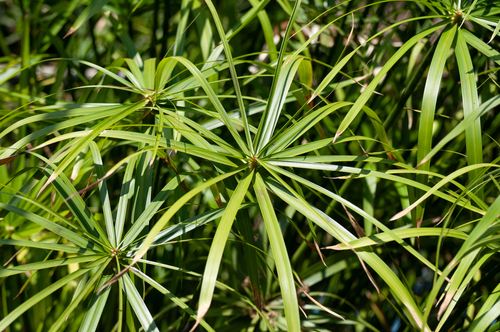
Umbrella plants, also known as Schefflera Arboricola, are a popular houseplant that can add a touch of greenery to any space. These plants are native to Taiwan and Hainan, and they are known for their distinctive umbrella-shaped leaves.
Umbrella plants are relatively easy to care for, making them a great choice for beginners. They can grow up to 10 feet tall if given the right conditions, but they can also be pruned to maintain a smaller size.
To keep your umbrella plant healthy, it is important to provide it with proper care and maintenance. This includes regular watering, fertilizing, and pruning. Umbrella plants are also sensitive to temperature and humidity, so it is important to keep them in a suitable environment.
One of the most common problems that umbrella plant owners face is brown leaves. This can be caused by a variety of factors, including overwatering, underwatering, temperature problems, lighting issues, and more.
If you notice that your umbrella plant’s leaves are turning brown, it is important to identify the cause and take action to correct it.
Why Is My Umbrella Plant Turning Brown – 5 Common Problems
Umbrella plants are easy to care for, but they can still develop brown leaves. Brown leaves can be a sign of several issues, including overwatering, underwatering, exposure to direct sunlight, temperature fluctuations, and pests and diseases.
It’s important to identify the cause of the brown leaves to prevent further damage to the plant.
1. Overwatering
Overwatering is a common cause of brown leaves in umbrella plants. When the soil is constantly wet, the roots can’t get enough oxygen, leading to root rot. The leaves may turn brown and droopy, and the plant may start to smell.
To prevent overwatering, make sure the plant is in a pot with drainage holes and water only when the top inch of soil is dry.
2. Underwatering
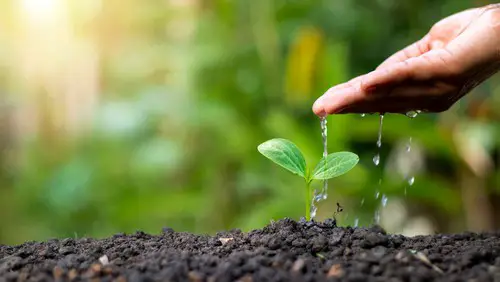
Underwatering is another common cause of brown leaves in umbrella plants. When the soil is too dry, the leaves may turn yellow and then brown. To prevent underwatering, water the plant when the top inch of soil is dry, and make sure the pot has drainage holes.
3. Exposure to Direct Sunlight
Umbrella plants prefer bright, indirect light. Direct sunlight can burn the leaves and cause them to turn brown. To prevent sunburn, place the plant in a location with bright, indirect light.
4. Temperature Fluctuations
Umbrella plants prefer temperatures between 60 and 75 degrees Fahrenheit. Fluctuations in temperature, especially cold temperatures, can cause the leaves to turn brown. To prevent temperature fluctuations, keep the plant away from drafty windows and doors.
5. Pests and Diseases
Umbrella plants can be susceptible to pests and diseases, such as spider mites, mealybugs, scale, and fungal species. These pests and diseases can cause brown spots, black spots, and yellowing of the foliage.
To prevent pests and diseases, keep the plant in a clean environment, avoid over-fertilizing, and inspect the plant regularly for signs of pests and diseases.
By identifying the cause of the brown leaves, you can take the necessary steps to prevent further damage to the plant. It’s important to maintain a consistent watering schedule, provide adequate lighting, and keep the plant in a suitable environment to promote healthy growth and prevent brown leaves.
Proper Care and Maintenance of Umbrella Plants
Umbrella plants are beautiful and low-maintenance houseplants that can thrive in most indoor environments. However, to keep your umbrella plant healthy and prevent it from turning brown, it is essential to provide it with proper care and maintenance.
1. Watering Schedule
One of the most important aspects of umbrella plant care is watering. Overwatering or underwatering can cause the leaves to turn brown and fall off.
It is recommended to water your umbrella plant once a week, allowing the soil to dry out slightly between waterings. Ensure that the pot has proper drainage to prevent water from accumulating in the soil.
2. Lighting Requirements
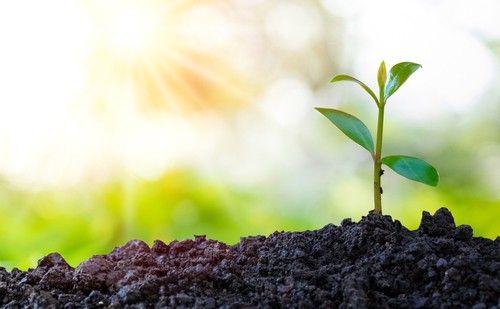
Umbrella plants prefer bright, indirect light, but they can also tolerate low light conditions. Direct sunlight can scorch the leaves, leading to browning and damage. If your umbrella plant is not receiving enough light, consider placing it near a window or using artificial lighting to supplement natural light.
3. Temperature and Humidity Control
Umbrella plants prefer warm temperatures between 60°F to 75°F and high humidity levels. If the air in your home is dry, consider using a humidifier or placing a tray of water near the plant to increase humidity levels. Avoid placing your umbrella plant near drafts or in areas with fluctuating temperatures.
4. Pest and Disease Management
Umbrella plants are generally resistant to pests and diseases, but they can be susceptible to spider mites, mealybugs, and scale insects. Regularly inspect your plant for signs of infestation, such as webbing or sticky residue on the leaves. If pests are present, treat your plant with an appropriate pesticide or insecticidal soap.
5. Repotting and Pruning
Umbrella plants should be repotted every 1-2 years to provide fresh soil and nutrients. When repotting, choose a pot that is one size larger than the current pot and use a well-draining soil mix.
Pruning can also help maintain the plant’s shape and prevent overcrowding. Pinch off any yellow or brown leaves and trim back any overgrown branches.
By following these care and maintenance tips, you can keep your umbrella plant healthy and prevent it from turning brown. Remember to provide your plant with proper watering, lighting, temperature and humidity control, pest and disease management, and repotting and pruning as needed.
Reviving a Brown Umbrella Plant
If your umbrella plant’s leaves are turning brown, it may be a sign that the plant is dying. However, it is possible to revive a brown umbrella plant and bring it back to life. In this section, we will explore some of the most common causes of brown leaves and how to fix them.
1. Identifying and Fixing the Problem

The first step in reviving a brown umbrella plant is to identify the problem. Brown leaves can be caused by a variety of factors, including overwatering, underwatering, lack of nutrients, over-fertilizing, pests, and diseases. Once you have identified the cause of the problem, you can take steps to fix it.
If the problem is overwatering, you should reduce the amount of water you give the plant and make sure the soil is well-draining. If the problem is underwatering, you should increase the amount of water you give the plant and make sure the soil is moist but not waterlogged.
If the problem is lack of nutrients, you should fertilize the plant with a balanced fertilizer. If the problem is over-fertilizing, you should stop fertilizing the plant for a while and flush the soil with water to remove any excess nutrients.
2. Trimming and Pruning
If the brown leaves are crispy and dead, you should trim them off to encourage new growth. Use a pair of clean, sharp scissors to cut off the brown leaves at the base of the stem. You can also prune the plant to promote new growth and improve its shape. Pruning should be done in the spring or summer when the plant is actively growing.
3. Changing the Environment
Umbrella plants prefer bright, indirect light and a temperature range of 65°F to 75°F. If your plant is not getting enough light or is exposed to extreme temperatures, it may develop brown leaves.
Move the plant to a brighter location or provide it with some shade if it is getting too much direct sunlight. You can also adjust the temperature by moving the plant away from drafts or using a heater or air conditioner.
4. Using Fungicides and Insecticides
If the brown leaves are caused by pests or diseases, you may need to use fungicides or insecticides to get rid of them. Neem oil and insecticidal soap are effective against many common pests, such as spider mites and mealybugs.
You can also use fungicides to treat fungal infections, such as powdery mildew. Be sure to follow the instructions on the label and wear protective clothing when applying these products.
Reviving a brown umbrella plant may take some time and effort, but with the right care and attention, your plant can recover and thrive. By identifying and fixing the problem, trimming and pruning, changing the environment, and using fungicides and insecticides when necessary, you can help your plant regain its health and beauty.
Conclusion
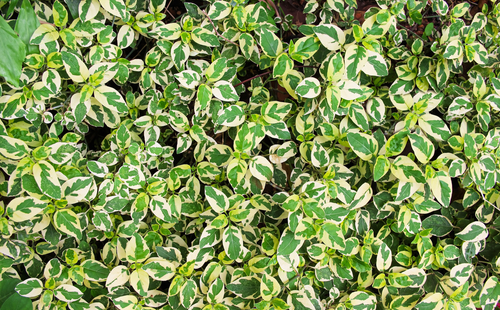
There are several reasons why an umbrella plant may turn brown. The most common cause of brown leaves is overwatering or underwatering. The plant needs just the right amount of water to stay healthy, and if it doesn’t get enough, the leaves will start to turn brown and wilt.
On the other hand, overwatering can cause the plant to become waterlogged and drown. It is important to water the plant when the top soil is dry and avoid letting it sit in water.
Temperature problems can also cause brown leaves in umbrella plants. The plant should be kept at a moderate temperature away from direct sunlight. Excessive exposure to direct sunlight can cause sunburn, which can lead to brown leaves. The plant should be kept in a location that receives bright, indirect light.
Fertilizer burn is another common cause of brown leaves in umbrella plants. Excessive fertilization can cause the leaves to turn brown and fall off. It is important to fertilize the plant as required and avoid over-fertilization.
If the plant is not receiving enough light, it may also develop brown leaves. The umbrella plant should be kept in a location that receives bright, indirect light. If the plant is not receiving enough light, it may be necessary to move it to a different location or provide additional light.
Finally, it is important to note that the umbrella plant is toxic to pets and humans. It is important to keep the plant out of reach of children and pets. If the plant is damaged or the leaves turn brown, it is important to remove them immediately to prevent the plant from becoming further damaged.
Frequently Asked Questions
Why are the stems on my umbrella plant turning brown?
The stems on an umbrella plant can turn brown due to overwatering or underwatering. Overwatering can lead to root rot, which causes the stems to turn brown and mushy.
Underwatering, on the other hand, can cause the stems to dry out and turn brown. In some cases, the stems may also turn brown due to exposure to direct sunlight.
How do you save a dying umbrella plant?
To save a dying umbrella plant, it is important to identify the cause of the problem. If the plant is overwatered, reduce the frequency of watering and allow the soil to dry out before watering again.
If the plant is underwatered, increase the frequency of watering and ensure that the soil is moist but not waterlogged. In some cases, pruning the plant may also help to revive it.
How do you know if your umbrella plant is overwatered?
Signs of overwatering in an umbrella plant include yellowing leaves, wilting, and a mushy stem. The soil may also be waterlogged and have a foul smell. To avoid overwatering, ensure that the soil is well-draining and that the plant is not sitting in water.
How often should I water my indoor umbrella plant?
The frequency of watering an indoor umbrella plant depends on various factors, such as the size of the plant, the type of soil, and the environmental conditions.
As a general rule, it is recommended to water the plant when the top inch of soil feels dry to the touch. Overwatering should be avoided, as it can lead to root rot and other issues.
Why is my umbrella plant turning brown after?
If an umbrella plant is turning brown after being healthy, it could be due to a change in environmental conditions.
For example, if the plant has been moved to a new location with different light or temperature conditions, it may experience some stress and turn brown. Other factors that can cause browning include pests, disease, and nutrient deficiencies.
Why is my umbrella tree leaves turning yellow?
Yellowing leaves on an umbrella tree can be a sign of overwatering, underwatering, or nutrient deficiencies. In some cases, yellowing leaves may also be due to pests or disease.
To diagnose the problem, it is important to check the soil moisture levels, inspect the leaves for signs of pests or disease, and ensure that the plant is receiving adequate nutrients.

Hey, I’m Lisa and I’ve been an avid gardener for over 30 years. I love writing, talking and living in the garden! Feel free to connect with me on my socials below

